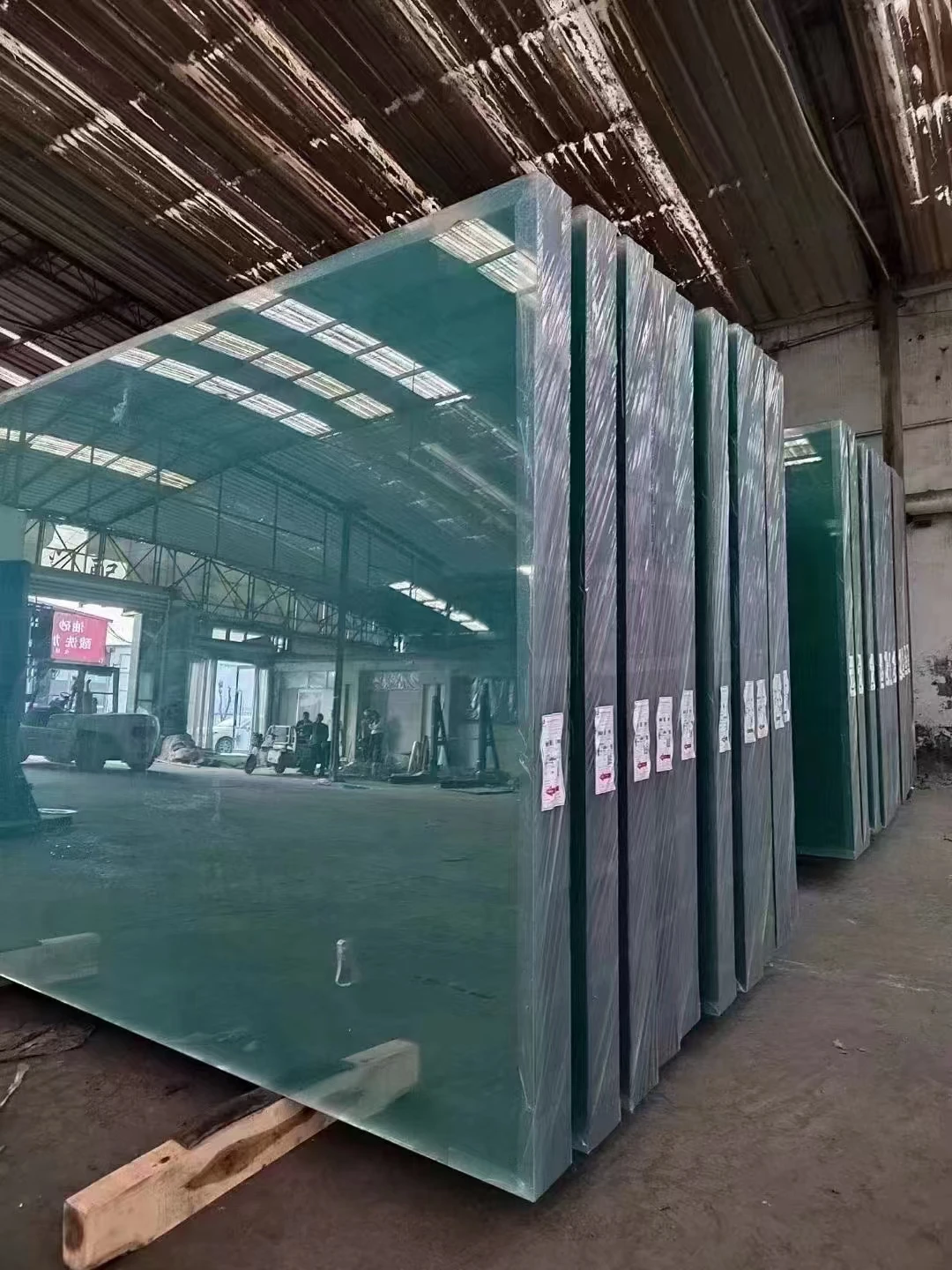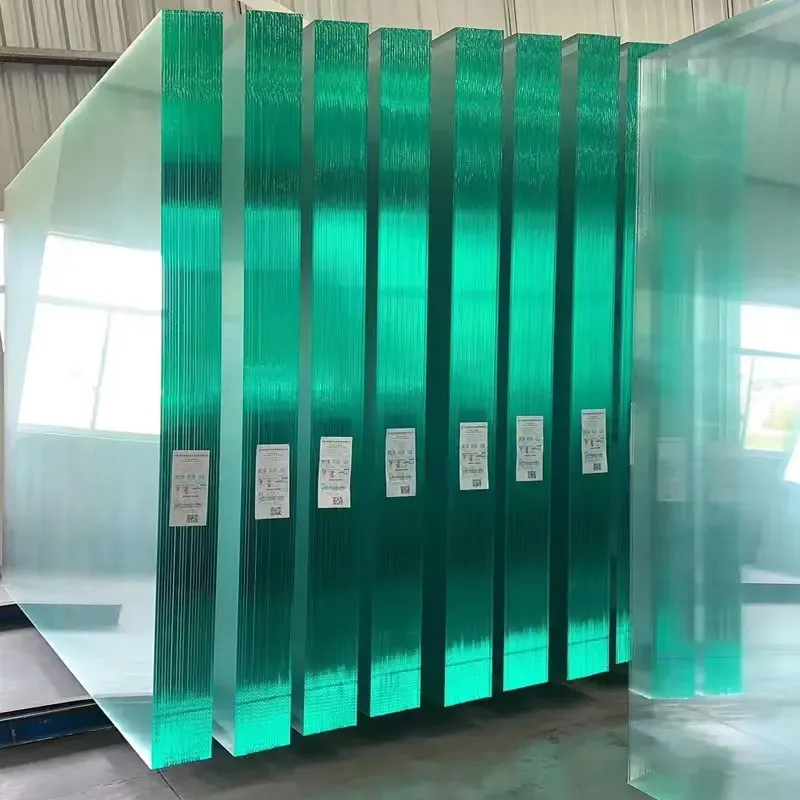The realm of float glass manufacturing combines precision, innovation, and expertise, contributing significantly to various industries with its versatile applications. Renowned for its seamless finish and clarity,
float glass emerges as a product of meticulous engineering, evident in each phase of its manufacturing process.

In the initial phase, raw materials such as silica sand, soda ash, and limestone undergo careful selection, scrutinized for purity and quality. Their precise composition plays a vital role in the integrity of the final product. Expert formulations ensure that the resulting glass possesses the desired attributes necessary for its wide-ranging applications from construction to automotive industries.
Within the manufacturing plant, these raw materials are meticulously measured and blended, forming a uniform mixture. Subsequently, this mixture undergoes thermal treatment in a furnace, reaching temperatures upwards of 1700°C. At this juncture, industry expertise dictates the careful management of the furnace conditions to achieve the required viscosity and homogeneity within the molten glass.

A hallmark of float glass manufacturing is the float bath, orchestrating a continuous ribbon of glass floating on a bed of molten tin. This process, requiring acute attention to detail, produces glass with perfectly even surfaces and uniform thickness. The controlled atmospheric conditions within this stage are crucial, preventing any chemical interactions that might compromise the glass quality. This unique aspect of production is why float glass is renowned for its optical clarity and unblemished surface.
float glass manufacturing
Following the formation phase, the glass undergoes a robust annealing process in a controlled cool-down atmosphere, ensuring the release of internal stresses. Expertise in managing this phase is critical, as inadequate annealing could lead to susceptibility to stress fractures. Precision engineering continues to guide the process, providing necessary refinements that ensure the glass meets stringent industry standards.
The culmination of the float glass manufacturing process is intensive quality inspection and testing. Professionals in this domain employ both automated systems and expert evaluation to verify clarity, consistency, and physical dimensions, achieving compliance with international standards.
Beyond production, the lifecycle of float glass includes considerations for sustainability and environmental impact. Forward-thinking manufacturers engage in practices aimed at reducing their ecological footprint, emphasizing recycling and energy-efficient operational improvements. These efforts bolster reputations, fostering trust and credibility within the industry and among consumers.
In conclusion, the production of float glass embodies a blend of experience, technological precision, and environmental consciousness. Each facet of the manufacturing process reflects a deep-seated knowledge of glass chemistry and physics, aligning with the highest standards of excellence. Producing float glass not only fulfills commercial needs but also stands as a testament to human ingenuity in material science, providing a durable, high-quality product essential to modern infrastructure and daily life.
 Afrikaans
Afrikaans  Albanian
Albanian  Amharic
Amharic  Arabic
Arabic  Armenian
Armenian  Azerbaijani
Azerbaijani  Basque
Basque  Belarusian
Belarusian  Bengali
Bengali  Bosnian
Bosnian  Bulgarian
Bulgarian  Catalan
Catalan  Cebuano
Cebuano  Corsican
Corsican  Croatian
Croatian  Czech
Czech  Danish
Danish  Dutch
Dutch  English
English  Esperanto
Esperanto  Estonian
Estonian  Finnish
Finnish  French
French  Frisian
Frisian  Galician
Galician  Georgian
Georgian  German
German  Greek
Greek  Gujarati
Gujarati  Haitian Creole
Haitian Creole  hausa
hausa  hawaiian
hawaiian  Hebrew
Hebrew  Hindi
Hindi  Miao
Miao  Hungarian
Hungarian  Icelandic
Icelandic  igbo
igbo  Indonesian
Indonesian  irish
irish  Italian
Italian  Japanese
Japanese  Javanese
Javanese  Kannada
Kannada  kazakh
kazakh  Khmer
Khmer  Rwandese
Rwandese  Korean
Korean  Kurdish
Kurdish  Kyrgyz
Kyrgyz  Lao
Lao  Latin
Latin  Latvian
Latvian  Lithuanian
Lithuanian  Luxembourgish
Luxembourgish  Macedonian
Macedonian  Malgashi
Malgashi  Malay
Malay  Malayalam
Malayalam  Maltese
Maltese  Maori
Maori  Marathi
Marathi  Mongolian
Mongolian  Myanmar
Myanmar  Nepali
Nepali  Norwegian
Norwegian  Norwegian
Norwegian  Occitan
Occitan  Pashto
Pashto  Persian
Persian  Polish
Polish  Portuguese
Portuguese  Punjabi
Punjabi  Romanian
Romanian  Russian
Russian  Samoan
Samoan  Scottish Gaelic
Scottish Gaelic  Serbian
Serbian  Sesotho
Sesotho  Shona
Shona  Sindhi
Sindhi  Sinhala
Sinhala  Slovak
Slovak  Slovenian
Slovenian  Somali
Somali  Spanish
Spanish  Sundanese
Sundanese  Swahili
Swahili  Swedish
Swedish  Tagalog
Tagalog  Tajik
Tajik  Tamil
Tamil  Tatar
Tatar  Telugu
Telugu  Thai
Thai  Turkish
Turkish  Turkmen
Turkmen  Ukrainian
Ukrainian  Urdu
Urdu  Uighur
Uighur  Uzbek
Uzbek  Vietnamese
Vietnamese  Welsh
Welsh  Bantu
Bantu  Yiddish
Yiddish  Yoruba
Yoruba  Zulu
Zulu 


